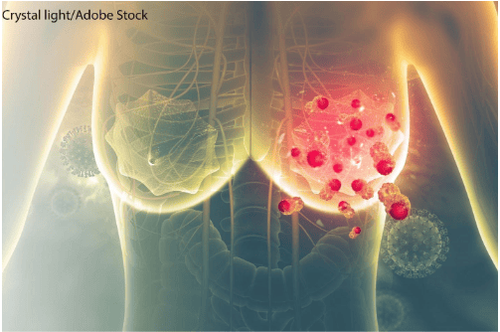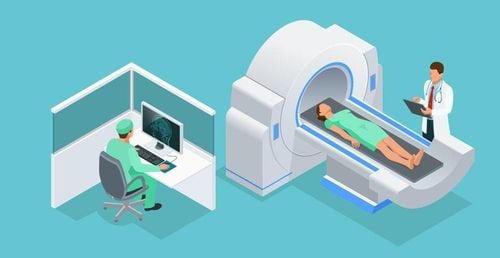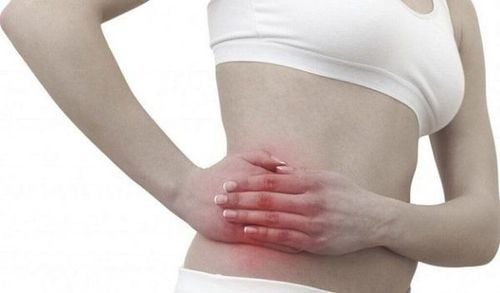This is an automatically translated article.
The article is professionally consulted by Master, Doctor Nguyen Quang Duc - Doctor of Nuclear Medicine - Department of Diagnostic Imaging and Nuclear Medicine - Vinmec Times City International General Hospital.Whole-body computed tomography is a medical examination that allows doctors to diagnose problems inside a patient's body without surgery. A full-body CT scan helps the doctor to have an accurate conclusion about the problem the patient is having and to suggest an effective treatment.
1. Overview of whole body CT scan
CT scan is a technique that uses X-rays to survey any place on the human body, allowing doctors to closely observe the details and structure of the parts to be examined. A full-body CT scan is performed from the top of the skull to the end of the pelvis or can extend the field of view downwards (depending on the case). This method is usually performed on multi-slice computed tomography machines, preferably 64 or more sequences because of the long examination field, the need for fast cutting speed to properly assess the hemodynamics of the lesion.With full-body computed tomography, doctors can check the patient's health and detect cancer risk. Diseases such as breast cancer, lung cancer, thyroid cancer, brain disease, etc. can all be detected through whole-body CT scanning technique, without using invasive measures.
Regarding the time to perform the technique, a full-body CT scan takes longer than a CT scan of the brain, heart, lungs, etc. The process from preparation to results will take about 30 - 50 minutes. After taking the picture, the doctor will rely on the obtained images to assess the patient's condition, monitor the patient's health and pathology.

Các bệnh như ung thư vú, ung thư phổi, ... đều có thể được phát hiện thông qua kỹ thuật chụp CT toàn thân
2. Indication for full-body screening computed tomography
● To detect metastatic lesions or identify primary lesions;● In case of multiple severe injuries, it is necessary to quickly diagnose the location and accurately classify the injury.
Full-body computed tomography scan should only be performed in people over 50 years old, helping to evaluate cardiovascular diseases, spine, cancer,... For people in their 30s, CT scans should be limited. whole body but should only be taken at the necessary location or when there are symptoms.
3. Contraindications for whole body CT scan
● Full-body computed tomography scan has no absolute contraindications.● Relative contraindications for people who are allergic to intravenous iodine contrast agents, bronchial asthma, kidney failure, liver failure, pregnant women and children.
4. Full body scan computed tomography scan
4.1 Preparation
● Performer: Including specialist doctors, radiology technicians and nurses● Medical supplies: Syringes of all kinds, water-soluble iodine contrast agents, surgical instruments, skin antiseptic solutions , distilled water or physiological saline, medicine box, first aid equipment for contrast drug accidents,...
● Technical facilities: Computer tomography machine, electric pump, film, film printer, system image storage system;
● Patient: The procedure is thoroughly explained; remove metal objects on the body; fast before 4 hours, can drink less than 50ml of water; sedation can be used if the patient is too excited and cannot lie still;
● Test card: There is a written order for a computerized tomography scan and other necessary papers.
4.2 Carrying out full-body scan computed tomography
● Patient position: Lie on your back with your head turned towards the chassis. If the skull is cut, let the hands follow the body; If cutting the thorax - abdomen, the hand should be raised to the head (not required in cases of trauma). The purpose of this is to avoid image noise from the humerus;Intravenous needle placement: Usually placed in the veins of the upper extremities, should be placed in the limb opposite the injury if there are lesions in the chest layer such as the mammary gland, axillary fossa to avoid the risk of image interference due to contrast. high concentrations of iodine in the veins. In other cases, the needle can be placed in the veins of the lower extremities, the jugular veins, the subclavian veins, and the cutting technique should be performed according to the Bolus timing program to determine the correct cutting time;
● Set up computerized tomography machine parameters: Enter complete patient information data; parameters Kv, mAs, FOV and ball rotation speed vary from patient to patient; select a continuous spiral cutting program with the appropriate cut thickness; injection rate 3 - 5 ml/s, drug dosage 1.5 - 2 ml/kg body weight; cut according to the Bolus timing program according to the technique;
● Shooting: Crop orientation in 2 vertical and horizontal planes; Continuously cut the neck, thorax, abdomen and pelvis before drug injection, and after drug injection in the arteries and veins. When cutting to the cranial level, it is necessary to instruct the patient to put the hand down to the trunk;
● Reconstruction and rendering: Reconstruction of vertical and horizontal planes with a thickness of 1.5 - 3mm reproduces MIP, MPR and VRT for diagnostic purposes. Need to build 3D image depending on the lesion and indication for examination;
● Monitoring the patient after the scan: Apply a tight bandage at the needle removal site to prevent bleeding, and at the same time monitor for late allergic reactions to iodine contrast agents.

Kỹ thuật chụp cắt lớp vi tính tầm soát toàn thân
4.3 Evaluation of the results of computerized tomography screening for the whole body
● Obtained images show anatomical structures in the examination area;● Detecting lesions, assessing the nature of drug enhancement, if any.
4.4 Complications and how to deal with them
● There may be errors such as the patient not keeping still during the whole body computed tomography scan, or the image is not clear, so it is necessary to repeat the technique;● Complications related to iodinated contrast agents: Allergies, shortness of breath, rash,... need to be handled according to the standard protocol.
Whole-body computed tomography scan is the basis for doctors to make diagnoses of the patient's disease and take appropriate intervention measures. When prescribed to perform this method, the patient should strictly follow the instructions of the doctor.
With the desire to improve the quality of medical examination and treatment to meet the needs of customers, now Vinmec International General Hospital has been and continues to invest in modern machines to serve CT scans. computer, X-ray, MRI ... in diagnosing images, thereby identifying diseases that customers may have and giving timely treatment, avoiding possible dangerous complications happen.
Especially to bring about high efficiency in medical examination and treatment, now Vinmec also designs many medical services accompanied by leading specialists both at home and abroad to bring results. the best treatment results for customers.
German doctor has more than 12 years of experience in the field of Diagnostic Imaging. Recently, the Doctor has been assigned to specialize in the field of Nuclear Medicine. Currently, the doctor is studying for an intensive course in Nuclear Medicine at Stanford Hospital, USA.
To be examined and treated for Vinmec disease, please come directly to Vinmec Health System or register online HERE.














